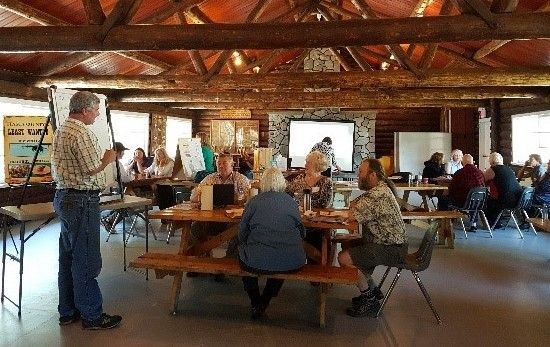White Iron Chain Of Lakes Association
What Can I do?
Part Two; Does it Really Matter What I Do?
By Kelli Saunders
Last week, I introduced the idea that we can all make a difference when it comes to protecting our watershed and, collectively, that can have a huge impact. This week, I am continuing that conversation with a few additional ideas that are easy to do and are relevant whether you own waterfront property or not.
Reduce the toxic chemicals in your house – what goes down your drain eventually goes to the nearest waterbody, whether its via the sewage treatment plant or a storm drain on your street or your own septic system. Try to transition from harsh chemicals to more natural products - baking soda and vinegar have great cleaning power!
Use a rain barrel to collect water for your gardens and household plants – reducing water consumption is always a good thing. Slowing down or retaining runoff from storm events can reduce the amount of phosphorus and sediments entering the lake or river, protecting water quality and nearshore fish habitat. Especially if you have a septic system, minimizing laundry use, switching to low flow toilets and taking shorter showers will help your system work efficiently.
Reduce solid surfaces on your property whenever possible and increase porous surfaces. Runoff is accelerated on smooth surfaces and will carry contaminants with it as it flows to the nearest lake, stream or river. The filtering effect of natural, porous surfaces is beneficial downstream.
Boat responsibly! The bigger the wave, the bigger the impact on shoreline erosion. Erosion releases phosphorus, so slow down and reduce your wake around shorelines.
Your pet’s waste contains phosphorus and bacteria, which can run into the lake when it rains. So, pick up after your dog and flush it down the toilet so the septic system or sewage treatment plant will treat it in the same manner as human waste. For a fun take on what the City of Duluth is doing to encourage pet owners to pick up after their pets, take a look at this video, produced by the Minnesota Pollution Control Agency and the Duluth Regional Stormwater Protection Team: https://vimeo.com/355427843.
 Get involved with organizations who are focused on watershed stewardship – your local lake association, like the Lake of the Woods District Stewardship Association, or Lake of the Woods Water Sustainability Foundation, a local Soil and Water Conservation District (in Minnesota), or environmental committees affiliated with your local municipality or county are just a few examples. The 2018 and 2019 Binational Lake Association Network Events were attended by members of the WICOLA Board.
Get involved with organizations who are focused on watershed stewardship – your local lake association, like the Lake of the Woods District Stewardship Association, or Lake of the Woods Water Sustainability Foundation, a local Soil and Water Conservation District (in Minnesota), or environmental committees affiliated with your local municipality or county are just a few examples. The 2018 and 2019 Binational Lake Association Network Events were attended by members of the WICOLA Board.
This series is provided as part of the International Watershed Coordination Program of the Lake of the Woods Water Sustainability Foundation (www.lowwsf.com).
Kelli Saunders, M.Sc., is the International Watershed Coordinator with the Lake of the Woods Water Sustainability Foundation.
When you subscribe to the blog, we will send you an e-mail when there are new updates on the site so you wouldn't miss them.